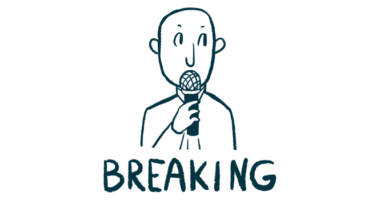Breaking the 4th Wall: My Struggle for Identification as an Artist
Columnist Shalom Lim Ern Rong returns to the world of disability art

On Nov. 10, I delivered my second poem, “Breaking the Fourth Wall,” at an engagement by ART:DIS, the first organization in Singapore to pioneer the artistic development of members of the disabled community. The goal of ART:DIS is to unearth the creative talents and diverse gifts of disabled Singaporeans in various multidisciplinary art forms.
The title of the event, “What If ‘I’ Is Not Me,” also was the theme ART:DIS used at the Singapore Writers Festival, an annual event to celebrate the diversity of creatives who have impacted their various communities with their work.
Earlier in September, ART:DIS conducted a series of literary arts workshops for community writers from three other social service agencies. At the workshops, they commissioned established artists with disabilities — Claire Teo, Dr. Dawn-joy Leong, and me — to compose a monologue, a speech, and a poem, respectively. They invited us to share our work with attendees at the three workshops to show them how they could best tell their stories through literary writing.
The death of my artistic identity
For me, it was a return to the disability arts scene after more than a decade of being away, as I previously was a child artist with ART:DIS specializing in traditional Chinese calligraphy and contemporary Chinese painting. Due to a progressive decline in dexterity and motor function caused by Duchenne muscular dystrophy, I was brutally robbed of my abilities to draw and paint, which I loved.
I also had to sacrifice a promising fine arts career in exchange for academic studies to conform to traditional cultural expectations. Growing up Chinese in a conservative Asian society meant I had less time to develop and hone my artistic craft.
As a child, I exhibited a significant amount of artwork with ART:DIS, culminating in a charity art book for the Muscular Dystrophy Association (Singapore), the pinnacle of creative journeys for my brother and me. But my art production lasted only five years, from 2002 to 2007. After that, school life got in the way.
Looking back, I like to think of what might have been had my brother and I been born at a time when society knew how to embrace our talents. What if we had been raised in a more progressive culture? What if we had been born 30 years later, when Singaporean society had become more aware and inclusive of people with disabilities? What if I never had Duchenne muscular dystrophy? What if I was not me?
The rebirth of my artistic identity?
My second poem was written in the context of Erving Goffman’s 1956 book, “The Presentation of Self in Everyday Life.” The book looks at how people, like actors and their characters, play multiple roles that are at odds with one another in daily interactions. Goffman posits that we all lead double lives and dual existences.
In public, for example, we must constantly put up a front in mainstream social institutions like school, the workplace, and church to get as far ahead as possible in life. In private, we can display the most authentic, original, and unfiltered versions of ourselves to our significant others.
Having been at many crossroads during my journey with art as a Duchenne survivor, I’ve found myself living multiple existences on a nonlinear plane of space and time. I’ve been a fine artist, a vocal artist, a former artist, and a spoken word artist, all in the span of 27 years.
What kind of an artist am I? I am still discovering the answer to the question, “What If ‘I’ Is Not Me?” One thing is certain: Life is a tumult of endless mystery, hope, wonder, and opportunity.
Note: Muscular Dystrophy News is strictly a news and information website about the disease. It does not provide medical advice, diagnosis, or treatment. This content is not intended to be a substitute for professional medical advice, diagnosis, or treatment. Always seek the advice of your physician or another qualified health provider with any questions you may have regarding a medical condition. Never disregard professional medical advice or delay in seeking it because of something you have read on this website. The opinions expressed in this column are not those of Muscular Dystrophy News or its parent company, Bionews, and are intended to spark discussion about issues pertaining to muscular dystrophy.








Leave a comment
Fill in the required fields to post. Your email address will not be published.